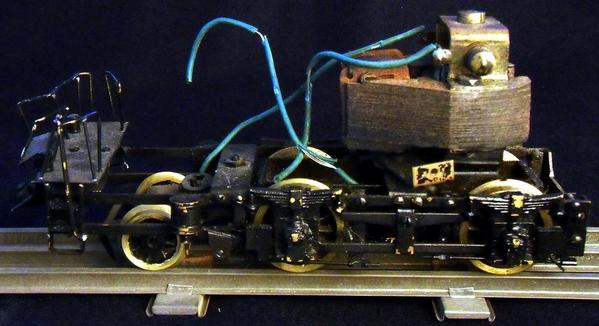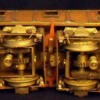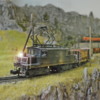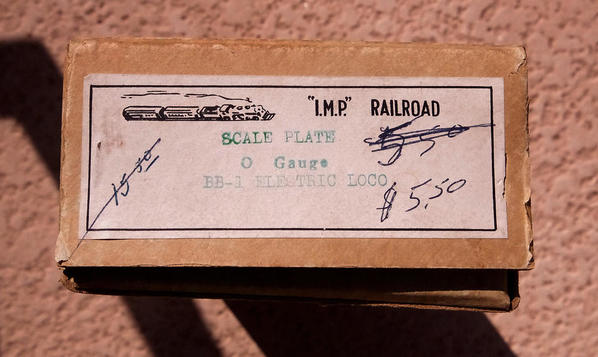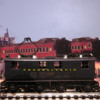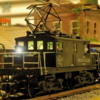I'm so grateful for everyone's input. It's all fascinating to me, and it all prompts more questions.
Ed, I think you've nailed it; your suggestion fits all the facts I have and all the apparently conflicting bits of information I've been hearing. Grandpa absolutely did visit the Tenshodo store in Tokyo and that's where this stuff came from. Most of it, at least... Thanks! I was hoping he'd weigh in by now but I found a separate post by another member from a few years ago where he attached an image of an IMP ad that happens to show a nearly identical engine. Identical, except shorter without the front or rear trucks. It's just, the image is too small to make out anything except the biggest print. It says BB-1 but I don't know what that means.
Can anyone tell me what KTM stands for? And what's the significance of ED 1618? MWB, you called it a "box cab;" I'm not familiar with that term...? My only guess right now is, this is a replica of an engine used somewhere, for something, on the Japanese National Railway we were helping them rebuild. That's something that would've interested him greatly.
I first thought this was a streetcar; I'd never seen an engine with so many windows. Maybe that's part of the box cab explanation? MWB, I wonder if you can tell from the photos if any of those trucks are stamped or cast or not? I don't know what I'd be looking for. The wheels themselves appear to be cast; the structures that hold the axles is soldered but I think you can see that in the photos. I'm just wondering if they'd be on the "crude" end of the spectrum. It's ok if they are; I'm just curious about it. I can tell you that it was a bit tricky to place the vat car on the track for the photo; as soon as I could get the last wheel to sit right, another would slip sideways.
As far as that car goes, Scale Rail, I doubt very much it was altered. He might've had the skill set for that, as he worked in radio equipment, but I well remember the dollhouse and the toy baby carriage he made for my mom. Neither of them demonstrate the kind of finesse and precision the vat car has, and there's no evidence of anything having been removed. And he spent much more time on his photography, night classes, boating, radio transmissions, and other hobbies than on his trains. Any changes he made would've been purely "field-expedient" as we'd say in the army. Vats would've been made from trimmed soup cans rather than finely crafted out of delicate brass sheets. As you can see, these vats are perfect fits for the car. I believe they're original.
I find no evidence of a "Made in Occupied Japan" plate on any of the pieces, or evidence that anything like that had ever been there. I have no explanation for that. Maybe the first ones didn't say so?
Do you guys know if there's some sort of spring-loaded trick to extend the pantographs? Mine seem like they ought to have no problem opening but they seem held in place by something.
What would any of you say to the notion of re-soldering the slats decorating the sides of the car, or replacing a short section of missing rail? Would such steps ruin its value? Mostly right now I'm afraid of losing the three slats that are now unconnected at the top join.
Thanks again!
John A
![]()







